- Blog
Reinventing sports fan engagement through gamification
November 28 — 2023


The video game industry is the undisputed master of digital product engagement. For many years, video game studios have specialized in creating engaging, even addictive experiences. Their success is based on a solid understanding of how the human brain works. What if we could use their tricks to create engaging, innovative, and powerful digital experiences for sports fans? Let’s explore the psychological mechanisms involved in building customer or fan loyalty while creating immersive and enriching user habits.
“ Gamification is the craft of deriving all the fun and engaging elements found in games and applying them to real-world or productive activities. This process is what I call “Human-Focused Design,” as opposed to “Function-Focused Design.” It’s a design process that optimizes human motivation in a system, as opposed to pure efficiency. ”
According to the Octalysis model, there are eight primary impulses that sports teams can integrate into their products. Doing so can add value to their ecosystem and strengthen fan loyalty. Here’s a brief summary of these impulses and some concrete examples of their use.

1. Epic meaning or appeal: The need to contribute to something greater than oneself.
This impulse is triggered when a product inspires individuals to become involved in a larger cause. For example, it’s often the case that the game world is threatened with destruction, and the player is positioned as the only possible saviour.
Using historical rivalries to mobilize fans.
In the world of sports, one of the most effective ways to generate enthusiasm is to exploit the history of legendary rivalries. Intense dislike for a rival team can create a strong sense of pride among fans. This is a golden opportunity for teams to capitalize on this passion. They can increase engagement and attract more followers through exclusive content, contests, privileged presales, and more.
“ From the previous literature on rivalries within sport, we find that the presence of a rival can influence the likelihood of, and frequency with which fans follow their favorite team publicly, and can enhance identification with the team and fellow team supporters. ”
2. Development and fulfillment: The need for improvement, progress, accomplishment, and mastery.
This motivation is triggered when we have a goal to achieve. For example, a gamer may be motivated to improve and progress to reach an extra level in a game, or even practise for hours to reach the maximum level, simply for the pride and accomplishment.
Encourage fans to take more actions to progress.
The Jets360 loyalty program on the Winnipeg Jets mobile app is structured into levels to motivate fans to take specific actions to unlock new reward levels. Rather than simply accumulating points, the program offers users the opportunity to reach higher reward levels by unlocking new challenges associated with each tier. This approach encourages members to take additional actions and use the application more regularly, even outside of match days.
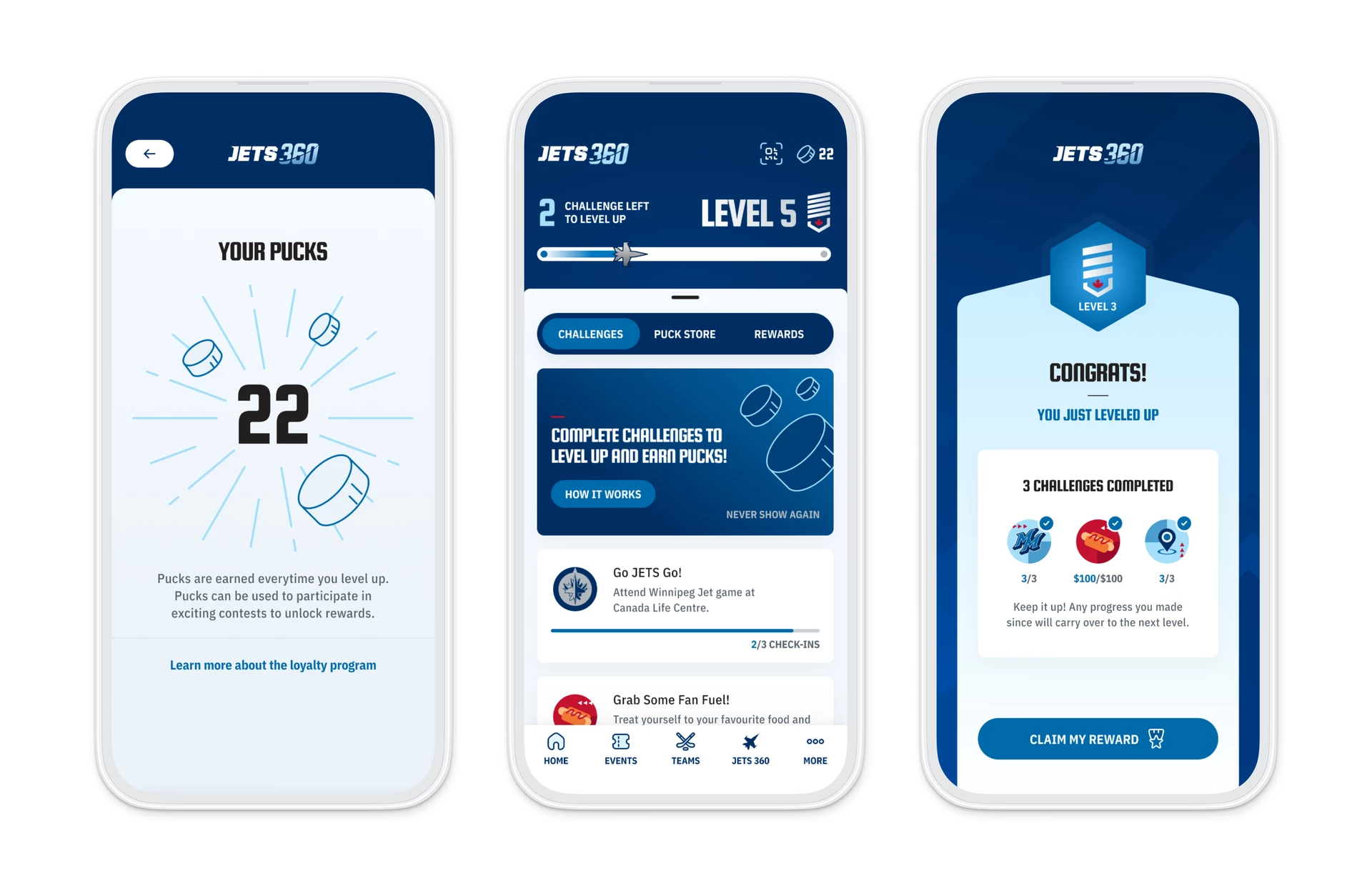
3. Creativity empowerment: The need to feel free to make choices and be rewarded for those choices.
This motivation is stimulated when a user experiences freedom of action, allowing them to use their creativity to strategize, progress, and discover new ways to achieve their goal. Timeless games like chess take advantage of this dynamic, giving players the space to innovate and think strategically.
“ The key to the Choice Perception is that the choice itself is not necessarily meaningful, but merely makes a person feel like they are empowered to make a choice. ”
⏤ Yu-Kai Chou
Giving fans a voice
In 2016, the FIA launched an initiative that allows Formula One fans to vote for the driver they think performed best at each Grand Prix. Fans can express their choice by visiting the F1 website or app a few minutes before the end of the race. Not only does this drive traffic to the site and app, but it also gives the community the feeling that they are making a meaningful choice and that their opinions are valued.

4. Ownership and possession: The need to accumulate and possess.
The ability to own, build, collect badges, and accumulate points is the essence of the fourth drive. In Pokémon games, for example, players are encouraged to catch as many Pokémon as possible, then collect and trade them, symbolizing a form of ownership and personal fulfillment.
Create a unique exchange currency for your loyalty program
The Winnipeg Jets application uses a unique virtual currency, “pucks,” as part of its Jets360 program. This initiative encourages fans to take various actions to accumulate as many Pucks as possible. These can then be exchanged for items, unique experiences, or coupons for exclusive contests. As a bonus, this mechanic also encourages creativity by giving fans the freedom to choose how to spend their pucks.
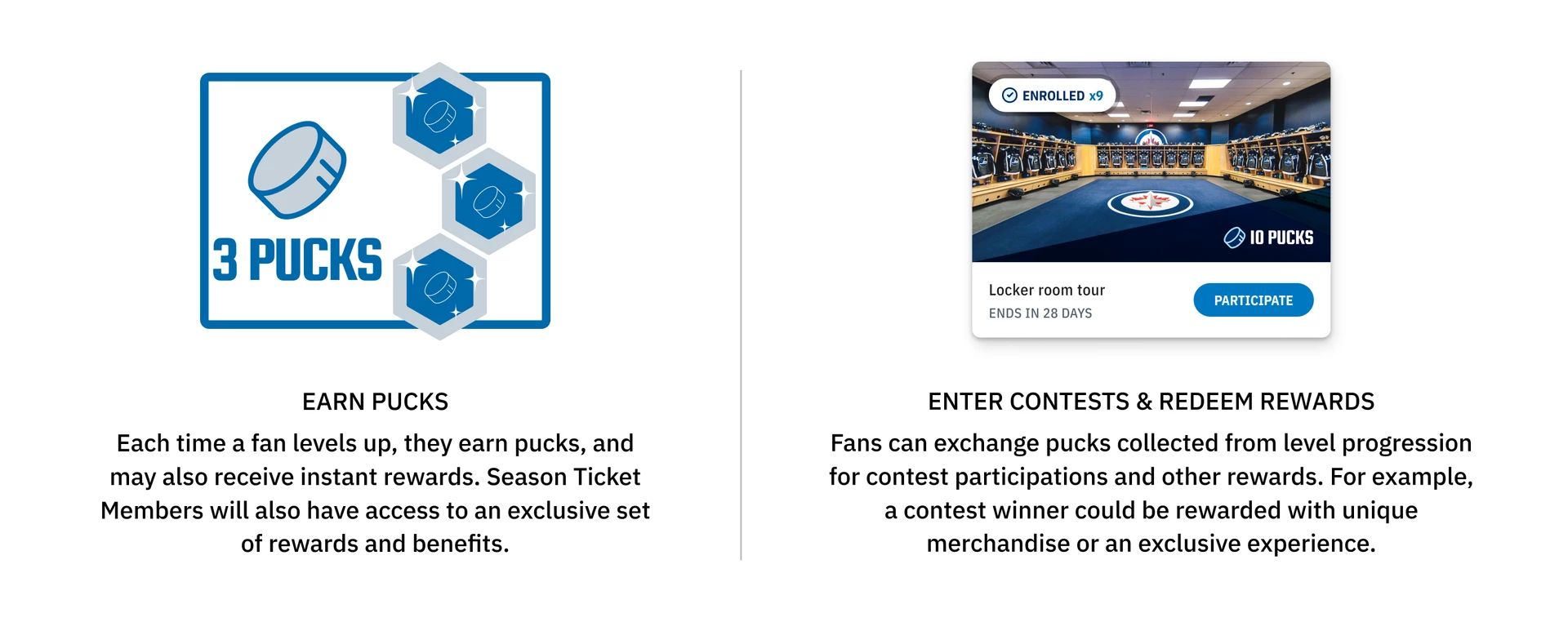
5. Social influence: The need to feel the approval and respect of our peers.
Humans are fundamentally social creatures. So, it’s not surprising that the fifth motivational pillar embraces and harnesses social dynamics such as mentoring, camaraderie, competition, and envy. It also includes the desire to belong, to connect with others, and to be associated with an event or community.
Leverage the second screen to bring fans together.
Sports fans use their mobile devices while watching a game for several key reasons: to feel the excitement of the crowd in real time, to share entertaining and inspiring content with their social networks, and to search for useful information to enrich their social interactions.
“ People [are] using their devices to connect with other fans. Some wanted to feel the adrenaline rush of big moments in real time. Others were focused on being the first to broadcast cool content and have their voice heard. And for some fans, connecting meant finding a common language and building social connections out in the world, away from their televisions. ”
For sports teams, this is a valuable opportunity to position their digital ecosystem as a companion to their fans, encouraging them to consume more content before, during and after a sporting event.
6. Scarcity and impatience: The urge to obtain something rare or unobtainable.
This dynamic is based on the principle of increased desire for something inaccessible or limited. It is commonly used in various games where the user must wait a certain amount of time before being able to access an object or feature. This waiting creates a sense of anticipation and longing that encourages the user to think about the game throughout the day, and to come back later to get what they want.
Getting fans to connect each day.
On the Montreal Canadiens application, a special feature called Prediction Question is available only from 7:09 p.m. to 7:19 p.m. each day. This question is linked to a prize pool that members of the Club 1909 loyalty program can participate in by using their points. Once the question is closed, the prize pool is shared among all members who answered correctly. This strategy of daily events creates a sense of rarity and exclusivity, encouraging users to develop the habit of connecting to the application regularly.
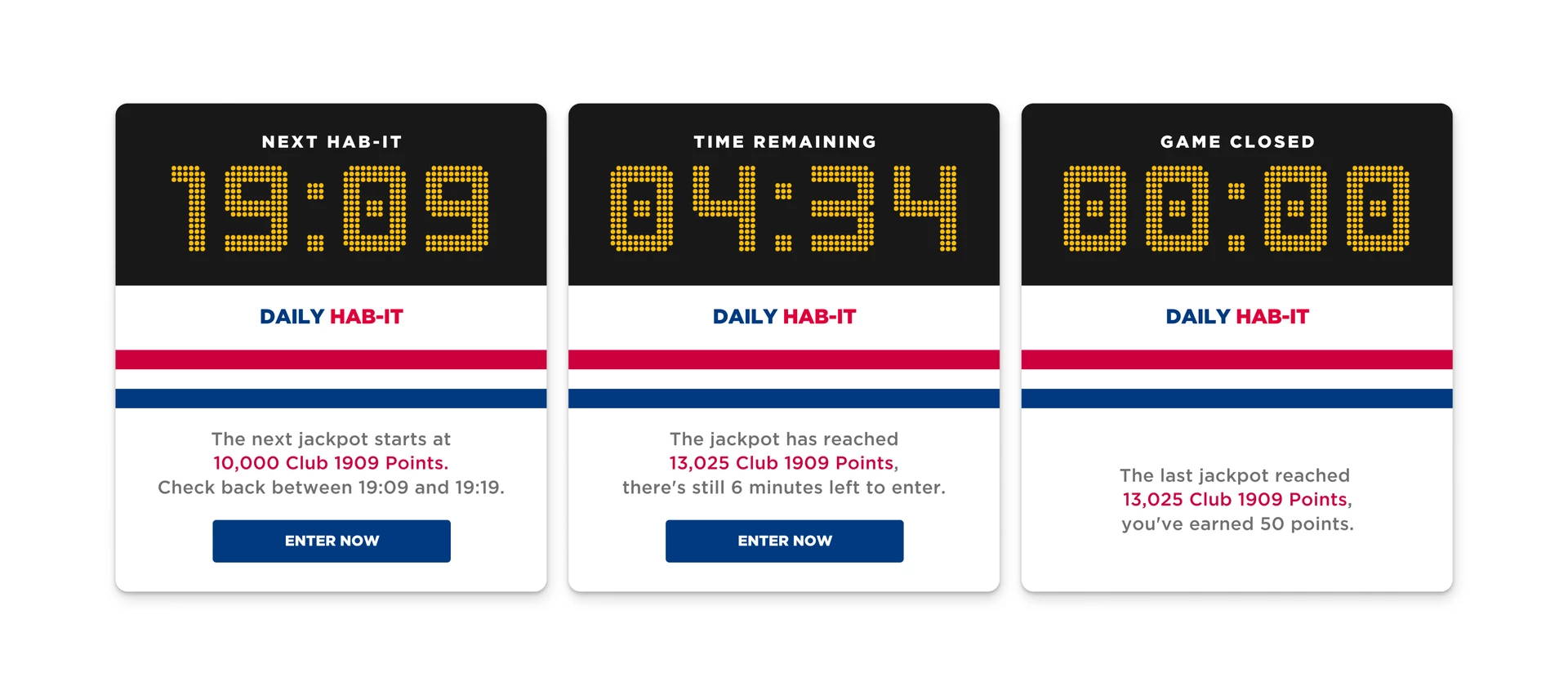
7. Unpredictability and curiosity: The urge to find out what will happen next.
Receiving a gift is much more exciting. Why is that? Because we’re motivated by curiosity and anticipation to find out what’s next. When users are unsure of the outcome or what to do next, they become hooked. It’s a big reason why many people immerse themselves in books or watch TV series: they’re eager to find out what happens next. This dynamic is often leveraged through promotional sweepstakes or lottery-based loyalty programs to engage and retain users.
Rewarding content discovery
In the Montreal Canadiens application, users are encouraged to actively browse content. If they scroll long enough, they may come across a random surprise question. Answering the question correctly earns them points. This approach, which capitalizes on the element of surprise and the unexpected, creates an added sense of excitement. It makes the experience not only more interactive, but also more fun and encourages deeper engagement with the application.
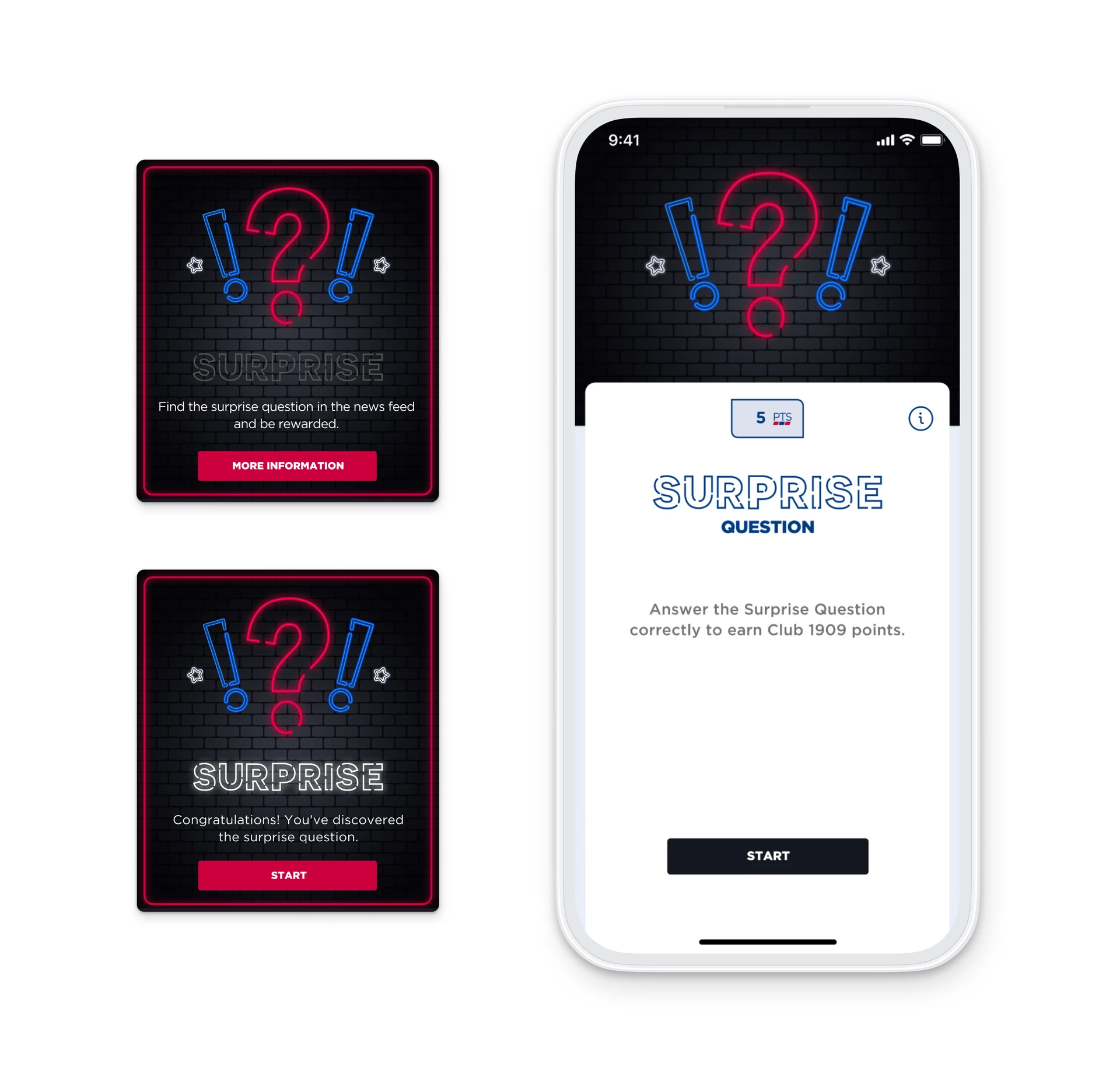
8. Loss and avoidance: The urge to do something to avoid a loss.
Have you ever felt your heart skip a beat after losing first place in a Mario Kart race? Loss aversion is a powerful psychological phenomenon.
“ Loss aversion is a cognitive bias that describes why, for individuals, the pain of losing is psychologically twice as powerful as the pleasure of gaining. The loss felt from money, or any other valuable object, can feel worse than gaining that same thing. ”
This fear of loss is the last motivator to be exploited. On a small scale, this can mean avoiding the loss of progress already made. On a larger scale, it can include the fear that giving up an activity will make all previous efforts in vain. Missed opportunities are also part of this dynamic. The fear of missing a chance or an important opportunity can cause users to act immediately to avoid losing a valuable opportunity. Some mobile games, for example, use this mechanism to encourage impulse purchases or quick decisions.
Exploiting urgency to stimulate action.
The App Store’s “in-app events” feature offers developers the opportunity to showcase real-time events directly on the App Store, such as a live sports match. Take the example of the RDS mobile app: the use of pop-ups and events helps exploit this impulse, since the latter are ephemeral. You’re encouraged to download, build a habit of use or allow notifications. FOMO (Fear of Missing Out) is a term frequently used to describe this kind of mechanic.
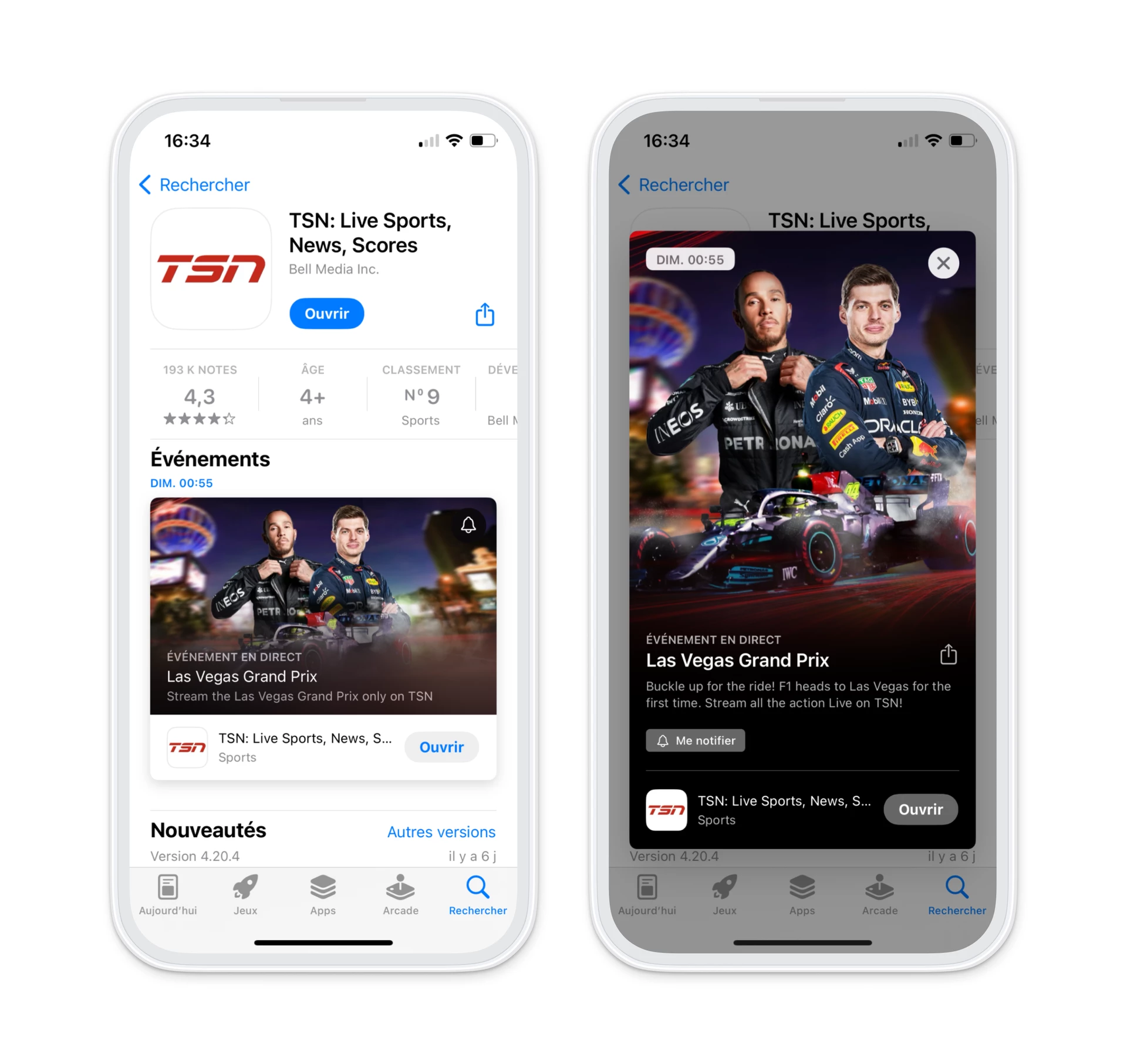
The final score
Integrating gamification into digital sports products is a powerful tool in terms of retention, engagement and frequency of use. By intelligently measuring the use of these pillars, sports teams can engage their followers and move from a passive experience to an active, enriching and, above all, fun interaction.
As we look to the future of digital engagement in sports, what will be the next big innovation that transforms the way we live and celebrate our sports experiences? This question sets the stage for a future where fan engagement is not only sustained, but constantly reinvigorated by new ideas and approaches.
